PRESTO PLANS
Sent straight to your inbox
CLICK HERE TO ACCESS
Sign up to receive 10 ready-to-use ELA resources your students will love!
10 FREE ELA RESOURCES
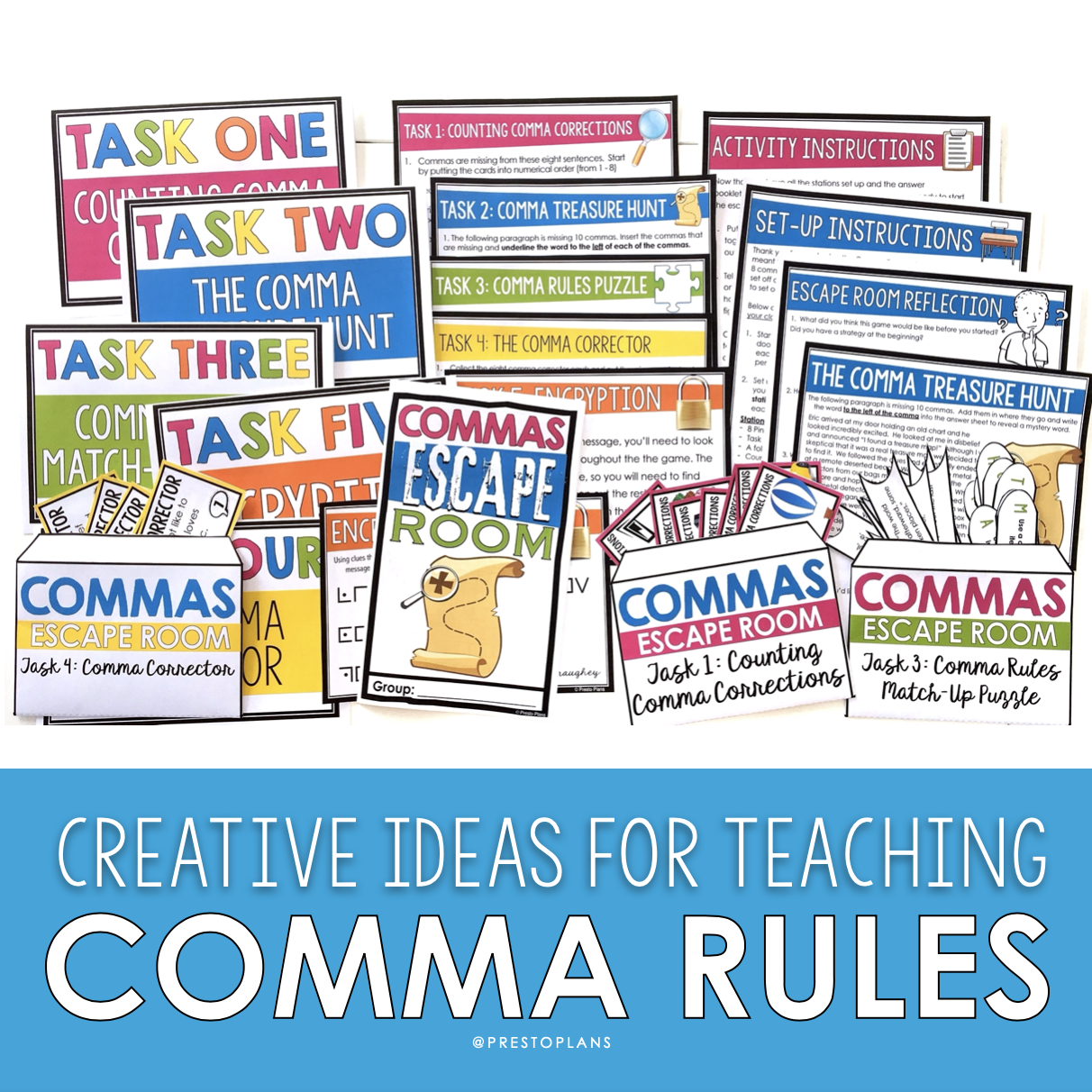
Creative Activities for Teaching Comma Rules in ELA
Ever feel like you need to come up for air while reading a long piece of student writing that has absolutely zero commas in it? There’s the alternative too—a bunch of commas in all the wrong places, which also makes for difficult reading. In the students’ defense, learning the comma rules can be challenging (and often, not all that fun). Because learning comma rules is such an important part of writing, it’s necessary for us as ELA teachers to get creative with how we’re teaching it to students. Here are 5 creative activities you can use to get students excited about learning comma rules in ELA.
Back to Basics
Before diving into teaching your students the different comma rules, it is worth spending some time making sure they have a strong understanding of the basic parts of speech and sentence types. If you’re teaching students to use a comma before a coordinating conjunction that connects two independent clauses, and they don’t know what a conjunction is, it’s going to be a problem. Because comma rules often revolve around sentence clause structure, it’s also important for students to know the different sentence types (simple, compound, complex, and compound-complex).
Once you’ve gone over the basic parts of speech and sentence types, I recommend teaching the comma rules directly and plainly at first, modeling lots of examples for students. Also, it can be a good idea to keep the basic comma rules displayed in your classroom for students to easily refer to at any point when they forget. Grab classroom comma rules posters for free below. Now, onto the activities that will make practicing comma rules really fun!
1. Comma Escape Room
There is perhaps no more entertaining way to learn comma rules than with a comma escape room activity. To run a comma escape room in your class, you can set up five different stations in your classroom with comma-related activities and puzzles at each one. Divide students into small groups and have them visit each station, working together to complete the tasks to reveal mystery codes and words that will help them escape!
In one station, for example, I get students to identify the number of missing commas in a variety of sentences, revealing a numeric code. In another, students read a story about a treasure hunt that contains missing commas. They add commas and insert words to the left of the comma into a key to reveal a mystery phrase.
Using an escape room to teach commas is a really fun and interactive way to help students master this skill. Students get so caught up in the puzzles and activities that they will forget what they are actually doing—practicing the comma rules!
2. Grammar Challenges
Another fun and interactive way to get your students practicing comma rules is with grammar challenges. Like comma escape rooms, these prompt students to use their grammar skills to solve a puzzle or an escape room-style task. There are a few different grammar challenges I use that focus on commas specifically. One of them is the commas in a series grammar challenge, which you can grab for FREE by clicking the image below.
There are also other grammar challenges I use for each of the following comma rules:
Each of these grammar challenges works the same way. You’ll begin by assigning a grammar quiz to check student understanding of a particular topic, such as comma splices, for example. You will use a presentation to teach whatever comma rule you are focusing on. Then, the class will read a creative narrative that hooks students into the backstory of the challenge—like the mystery of the lost mummy for commas with coordinating conjunctions. Students will complete the escape room-style challenge using what they’ve learned from the lesson.
If you’re into these grammar challenges, there is a ton of them in the full-year program that you can check out by clicking here.
3. Comma Text Messages
One way that we can make learning the comma rules more interesting for students is to teach it in a context that feels relevant to them. Instead of teaching students comma rules using basic sentences as examples, you can teach it through something that’s near and dear to most of them—texting!
Do you always use commas properly in your text messages? I can’t say for certain that I do. Maybe we can’t expect that of our students either. In any case, by framing comma rules within this context, learning about comma rules suddenly feels modern and interesting. This text message comma correction activity is a fun way for students to learn and apply the basic comma rules. This is another activity you can grab for FREE by clicking the image below!
4. Famous Commas
Another way to make learning comma rules feel more relevant and interesting to students is by using famous commas. For this activity, students will circulate the room to find task cards with famous quotes that are missing commas. They will rewrite the sentences, adding in the commas at the right spots. Then, in the end, everyone will come together to review the answers as a whole class. Like the text message activity, this makes learning comma rules more fun—this time by practicing them in the context of famous celebrity quotes. It’s also beneficial because it provides an opportunity for cross-curricular learning, as each of the cards features some historical information on each of the famous figures.
5. Comma Cut-Outs
The last creative activity for teaching comma rules to your ELA students is using comma cut-outs. This is where students can get a better understanding of how commas work in different situations by cutting up sentences into sections and having small comma pieces for students to add in the correct locations. You can use different sentence types for this!
For example, you could give them the compound sentence “My phone battery died, so I had to borrow a charger” broken into three sections: Independent clause #1 (My phone batter died), independent clause #2 (I had to borrow a charger), and the coordinating conjunction (so). By working with their hands and moving all the different parts into order, students can get a better understanding of how it all works together!
There you have it! I hope you found this helpful. If you’re looking for more tips and resources for teaching grammar, click here.
Looking for more grammar inspiration? You won’t want to miss my 5 Tips for Using Grammar Challenges in the ELA Classroom.


Search the blog for what you are teaching
GIVEAWAYS
sent straight to your inbox!
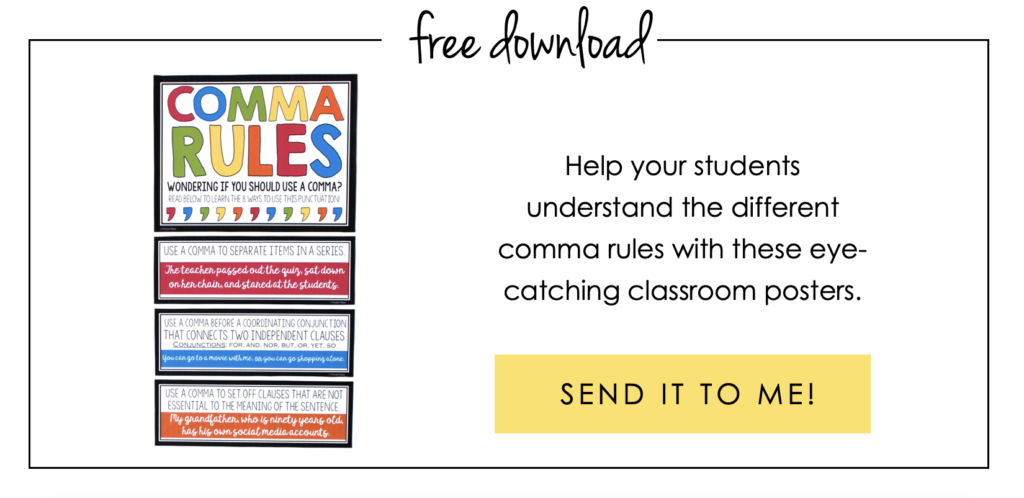
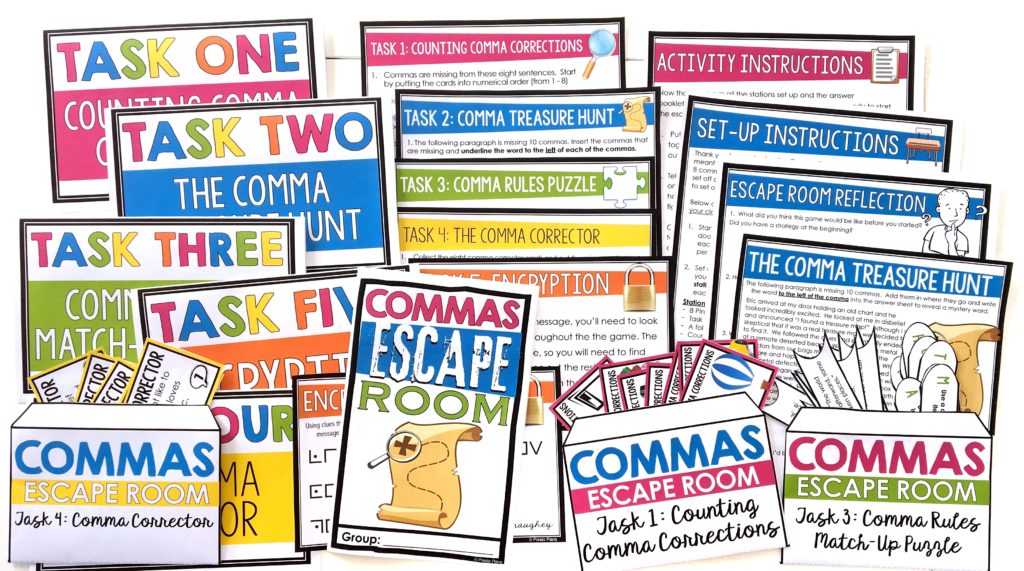
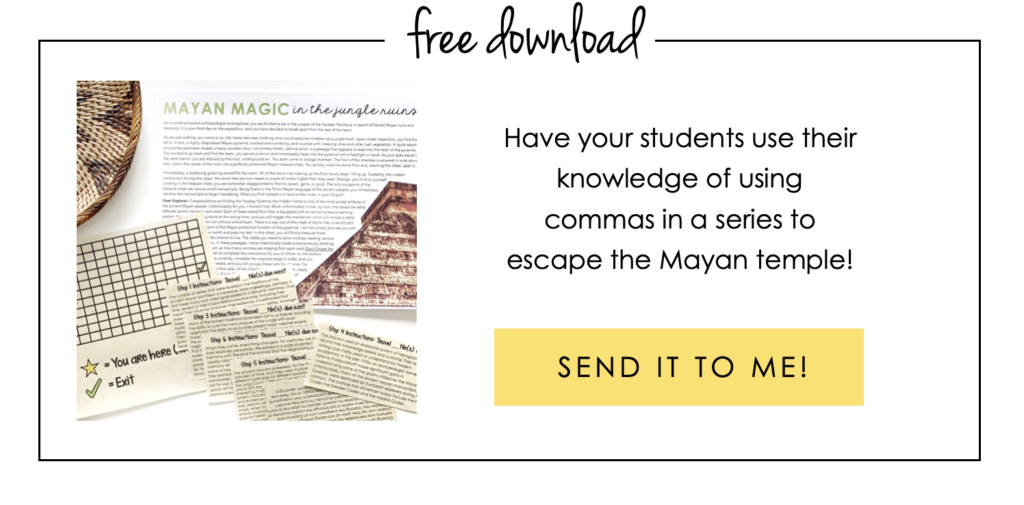

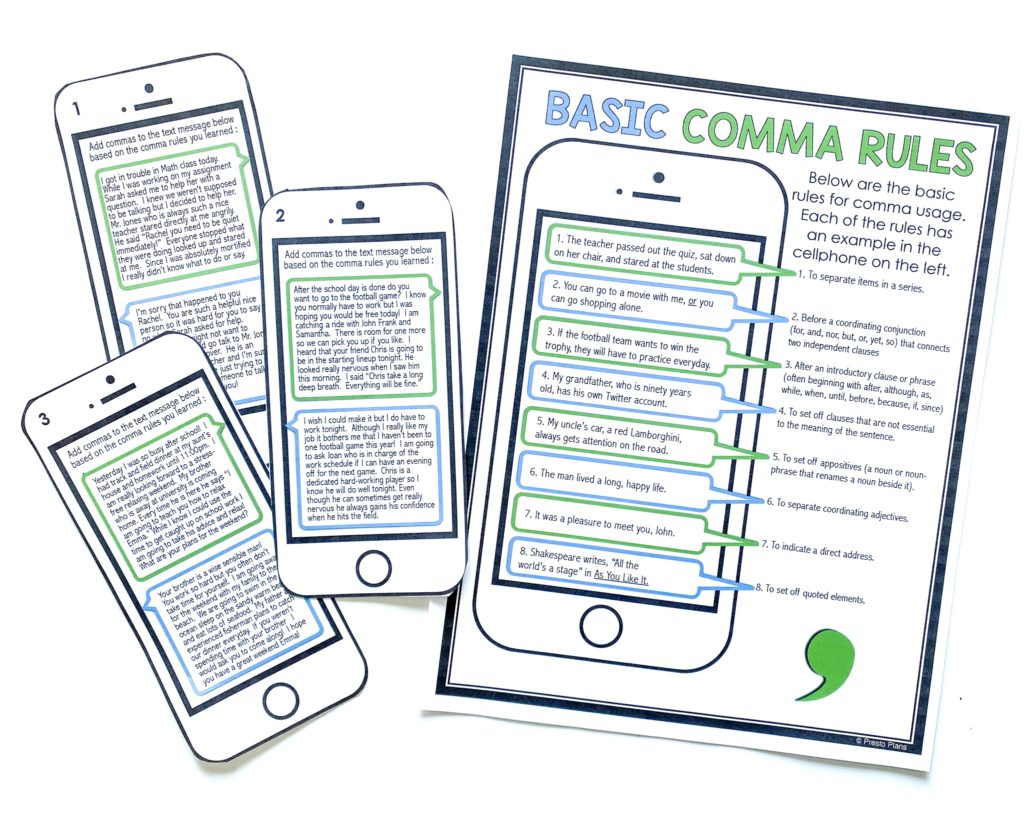
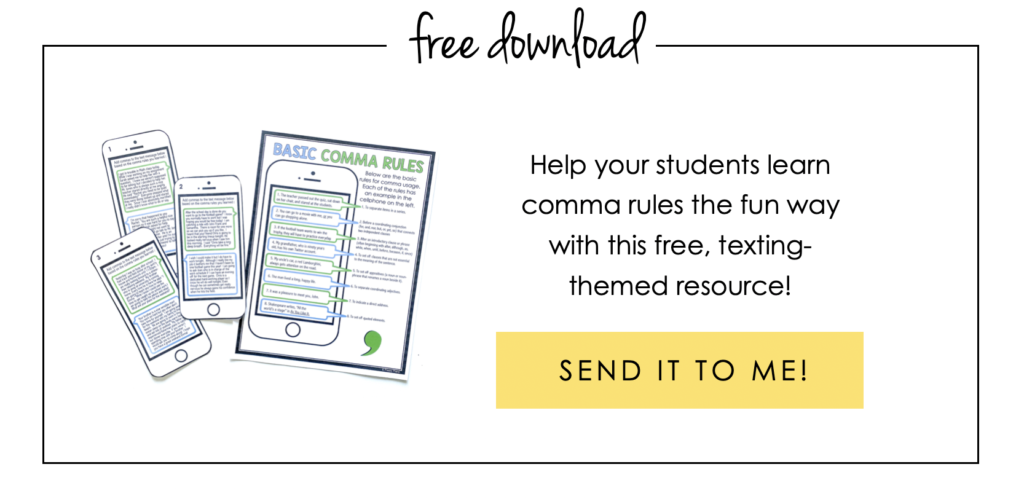
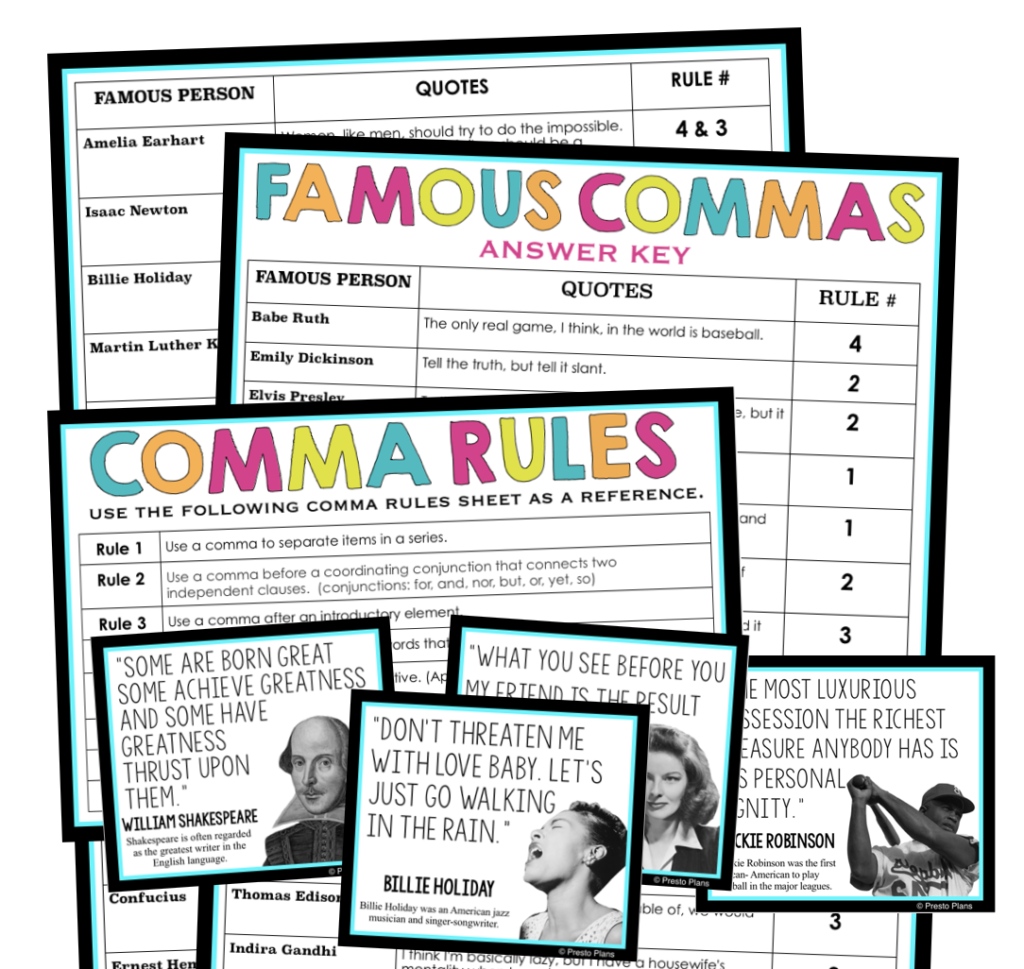





share this post